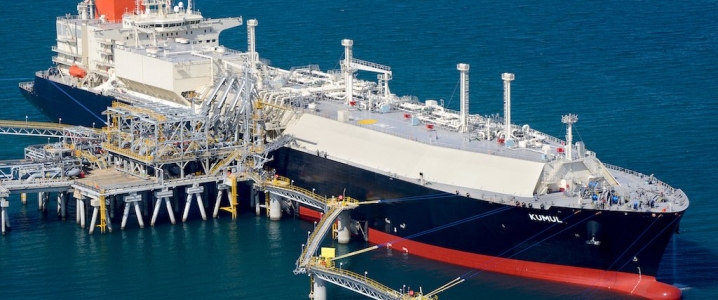Japan-Korea-Marker (JKM) prices for LNG to be delivered in November tanked on Friday by U.S. $1.039 per million British thermal units (MMBtu) year-on-year, settling at $9.925/MMBtu, accord to commodities data provider S&P Platts Global.
JKM is often still used as the benchmark price assessment for spot physical cargoes delivered ex-ship into Japan, South Korea, China and Taiwan. Japan, China and South Korea, for their part, are the largest global LNG importers, while the Asia-Pacific region makes up for 72 percent of all global LNG demand with that amount projected to increase to 75 percent amid increased Chinese procurement of the super-cooled fuel.
Prices headed south last week amid ample prompt supply against poor user-demand as well as falling global oil prices which have been facing headwinds over worries of faltering demand growth amid ongoing trade disputes and Middle Eastern geopolitical worries.
On Friday, the Paris-based International Energy Agency (IEA), in its closely watched monthly oil market report, lowered its oil demand growth forecasts for 2018 and 2019 by 110,000 barrels a day (b/d), to 1.3 million b/d and 1.4 million b/d. The agency said that despite fresh U.S. sanctions set to take effect on Iran’s energy sector on November 5, which have led to a faster-than-expected decline in crude exports from the Islamic Republic, global oil supply still remains robust. The IEA added that other OPEC members have also been ramping up oil production to fill the loss of Iranian barrels on global oil markets.
Crude prices ended Friday up slightly but still near two-week lows amid rising crude supply and global stock markets jitters. Though LNG spot prices are not linked to oil prices as are most long-term supply contracts they are often still influenced by them.
The Chinese factor
Moreover, the JKM dipped to its lowest point since August 1 and the first time it’s hit a single digit level since that date. Platts added that it sets a bearish tone for early winter trading. Related: Goldman Sachs: This Is The Next Big Risk For Oil
However, as winter approaches prices should find more support and trend upward again, particularly as China continues to fill storage ahead of winter to avoid a repeat of last year’s fiasco when energy planners rushed to replace dirtier burning coal usage with cleaner burning natural gas ahead of schedule in much of northern China. The result was an embarrassing development for Beijing as critical gas shortages forced the closure of key industrial users and the re-diversion of gas to residential end-users.
China Gas, one of the country’s main gas distributors, converted 1.2 million homes last year from coal to gas for heating, but as demand spiked at the onset of colder temperatures, shortages ensued and the utility could only heat around 400,000 homes, according to a South China Morning Post report. An emergency government order allowed owners of those homes to return to burning coal.
However, despite its shortfalls last winter, China Gas says it will be able to supply the 750,000 homes left without gas supply last year. It also plans to convert an additional 2 million homes this year, stating it will be able to supply gas to up to 600,000 of these end users. It has also converted a number of businesses, including the main plant of Tsingtao Brewery, which is the biggest client of China Gas in Qingdao.
“The gas shortage will not be as bad as last year, and the reported cases of freezing villagers will definitely not happen again this year,” Kevin Zhu Weiwei, executive director and managing vice-president of China Gas, said recently.
China Gas has also announced targets of meeting the energy needs of 2.8 million additional rural households in northern China by next year, and 3.6 million more homes in 2020, bringing the total to more than 8 million households in just three years.
By Tim Daiss for Oilprice.com
More Top Reads From Oilprice.com:
- Saudis Lash Out At U.S. In Complete Deterioration Of Relations
- This Giant Gas Field Is Rising From The Dead
- Iran’s New Gray Area Oil Trade Strategy


















